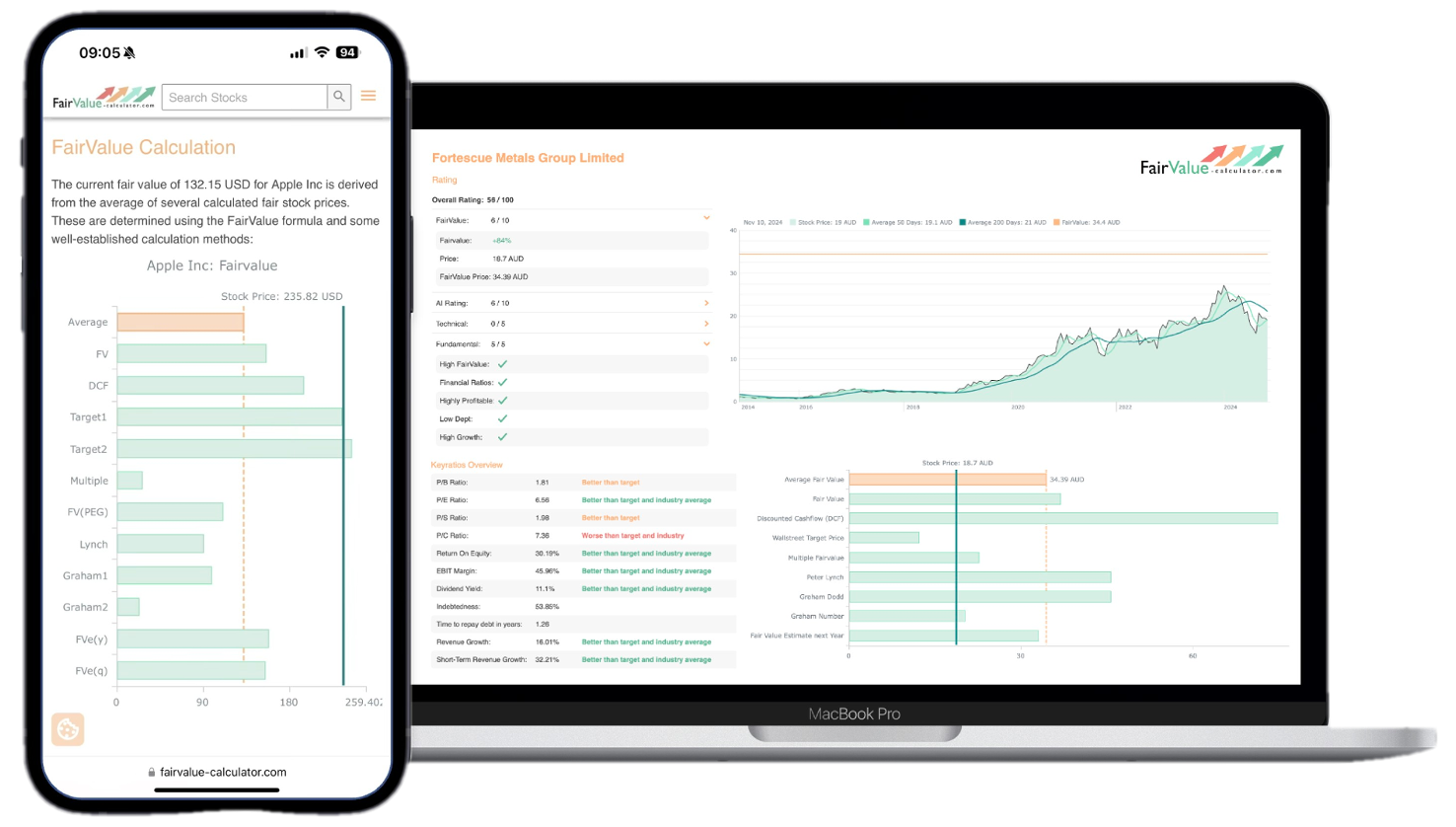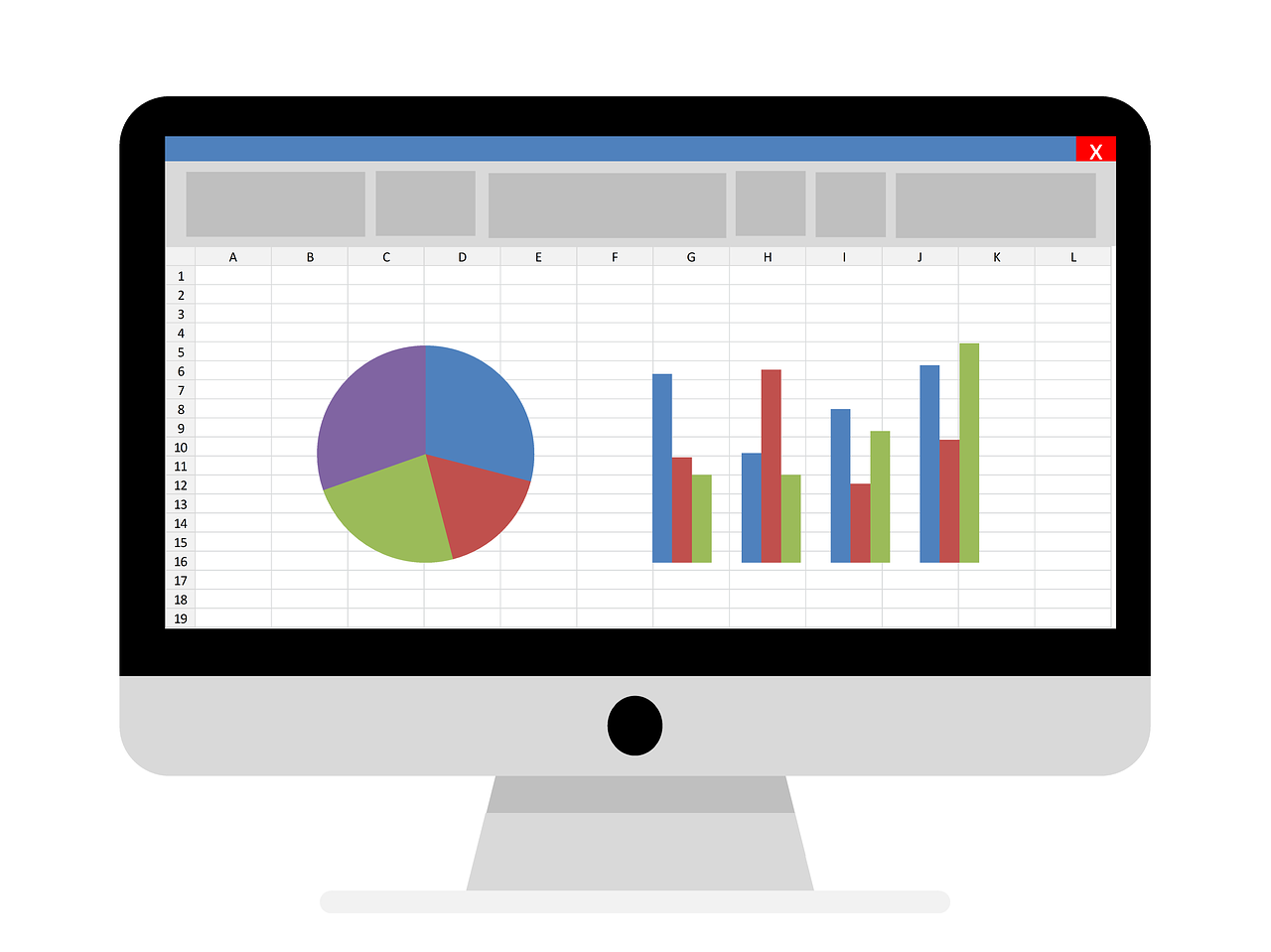In today’s digital age, navigating the intricate world of investments can feel like standing at the base of a mountain without a map. With countless tools and resources at our fingertips, pinpointing which ones are genuinely reliable is akin to finding a needle in a haystack. This quest becomes even more daunting when it comes to determining the fair value of stocks, a crucial step for making informed investment decisions. Thankfully, trusted online fair value calculators have emerged as a beacon of hope for investors seeking clarity amidst the chaos.
Imagine finally having access to a tool that demystifies the often baffling figures and jargon associated with stock evaluation. These calculators provide a simplifying lens through which investors can better understand the true worth of a stock, eliminating guesswork and reducing risk. As our financial landscapes continue to evolve, relying on dependable online resources isn’t just a convenience—it’s a necessity. Join us as we explore some of the most trustworthy online fair value calculators, designed specifically to empower your investment journey with accuracy and confidence.
💡 Discover Powerful Investing Tools
Stop guessing – start investing with confidence. Our Fair Value Stock Calculators help you uncover hidden value in stocks using time-tested methods like Discounted Cash Flow (DCF), Benjamin Graham’s valuation principles, Peter Lynch’s PEG ratio, and our own AI-powered Super Fair Value formula. Designed for clarity, speed, and precision, these tools turn complex valuation models into simple, actionable insights – even for beginners.
Learn More About the Tools →
Understanding Fair Value Calculation Basics
Fair value represents the price at which an asset would change hands between knowledgeable, willing parties in an arm’s-length transaction. It goes beyond simply looking at the current market price; it seeks to uncover the intrinsic worth of a stock based on fundamental factors. Common approaches include discounted cash flow (DCF) analysis, which projects future cash flows and discounts them back to present value, and comparable company analysis, which benchmarks metrics such as price-to-earnings (P/E) or enterprise-value-to-EBITDA against peers. Each method has its merits and limitations, but together they paint a comprehensive picture of what a share should ideally trade at.
Mastering fair value calculation basics involves understanding the assumptions that drive these models—growth rates, discount factors, terminal values and margin estimates. While manually crunching these numbers can be time-consuming and prone to error, online calculators streamline the process by automating complex formulas and pulling in key financial data. But this convenience raises a vital question: Are there online fair value calculators I can use? In the sections that follow, we’ll examine how to identify and employ reliable web-based tools that leverage these methodologies accurately and efficiently.
🚀 Test the Fair Value Calculator Now!
Find out in seconds whether your stock is truly undervalued or overpriced – based on fundamentals and future growth.
Try it for Free →Importance of Using Reliable Online Calculators
When determining fair value, precision and trustworthiness are paramount. An inaccurate estimate can lead to misguided investment decisions—overpaying for an overvalued stock or overlooking a bargain in the market. Reliable online calculators mitigate such risks by applying tried-and-tested financial models, incorporating up-to-date data, and offering transparent documentation of their underlying assumptions. This transparency allows investors to scrutinize and validate results rather than blindly trusting a black box.
Moreover, reputable calculators are backed by organizations or platforms with a track record in financial analysis. They regularly update their algorithms to reflect changing market dynamics, regulatory shifts, or new accounting standards. Using these vetted tools ensures that you’re not basing decisions on outdated or incomplete information. In addition, many reliable platforms provide sensitivity analyses, allowing you to see how variations in inputs—like discount rates or growth projections—can impact fair value estimates. Such features promote a deeper understanding of valuation drivers and enable more nuanced decision-making.
In essence, employing a dependable online fair value calculator is not just about saving time; it’s about safeguarding your investment strategy. From hobbyist investors to professional fund managers, everyone can benefit from the consistency, accuracy, and clarity these tools provide, ultimately leading to more confident and informed choices.
Explore our most popular stock fair value calculators to find opportunities where the market price is lower than the true value.
- Peter Lynch Fair Value – Combines growth with valuation using the PEG ratio. A favorite among growth investors.
- Buffett Intrinsic Value Calculator – Based on Warren Buffett’s long-term DCF approach to determine business value.
- Buffett Fair Value Model – Simplified version of his logic with margin of safety baked in.
- Graham & Dodd Fair Value – Uses conservative earnings-based valuation from classic value investing theory.
- Intrinsic vs. Extrinsic Value – Learn the core difference between what a company’s really worth and what others pay.
- Intrinsic Value Calculator – A general tool to estimate the true value of a stock, based on earnings potential.
- Fama-French Model – For advanced users: Quantifies expected return using size, value and market risk.
- Discount Rate Calculator – Helps estimate the proper rate to use in any DCF-based valuation model.
Top Criteria for Evaluating Online Fair Value Calculators
Choosing the right online calculator involves weighing several critical factors that directly affect the quality of your valuation. First and foremost is accuracy—the tool must use robust financial models and current data. Equally important is transparency: you should be able to review assumptions, inputs, and calculation methodologies. A lack of visibility often signals hidden biases or errors in the analysis.
Secondly, consider the source and credibility of the data. Leading calculators pull information from reputable financial terminals or APIs, ensuring that balance sheets, income statements, and market prices reflect the latest updates. Third, user experience matters: intuitive interfaces, guided workflows, and clear reporting can significantly reduce the learning curve and help you focus on the analysis rather than wrestling with technology. Finally, look for additional features like scenario analysis, customizable input fields, and exportable reports. These capabilities empower you to tailor the valuation to your unique investment thesis and to share findings with colleagues or clients seamlessly.
By applying these criteria—accuracy, transparency, data quality, user experience, and customization—you can more confidently answer the question, “Are there online fair value calculators I can use?” and be assured that your chosen tool will stand up to rigorous scrutiny.
Comparing Accuracy and Consistency Across Platforms
Accuracy in fair value assessment hinges on the calculator’s algorithms and data integrity. Different platforms may implement the same valuation methodologies yet arrive at varying results due to subtle differences in default assumptions, data sources, or rounding conventions. Consistency becomes equally important; you want a tool that delivers reproducible results every time you input the same parameters. Discrepancies across repeated runs signal potential flaws in data handling or computational logic.
To compare platforms effectively, gather a small portfolio of well-understood stocks and run them through multiple calculators. Document the inputs and track how each tool processes discount rates, growth assumptions, and terminal value calculations. Platforms that allow you to view and tweak these underlying variables typically yield the most reliable and transparent outcomes. Additionally, review historical back-testing results when available: calculators that have accurately predicted price movements in the past are valuable indicators of future performance.
Ultimately, benchmarking across several respected services will highlight which calculators consistently align with real-world market valuations. This comparative approach not only validates your choice of tools but also deepens your grasp of how different assumptions can sway fair value estimates.
Exploring User-Friendly Features for Seamless Navigation
Ease of use is often underestimated in financial analysis but plays a pivotal role in productivity and accuracy. A cluttered interface or obscure menu structure can slow down your workflow and lead to input errors, undermining the calculator’s reliability. Top-tier tools prioritize a clean, intuitive layout with logically grouped sections for data entry, model selection, and result interpretation.
Look for features such as drag-and-drop charting, real-time calculation updates, and guided tutorials that walk you through each step. Custom dashboards that highlight your frequently analyzed stocks save time, while keyboard shortcuts and collapsible panels help maintain focus. Mobile-friendly designs and dedicated apps extend your research beyond the desk, ensuring that you can revisit valuations on the go. Ultimately, a user-centric interface not only streamlines your analysis but also reduces the risk of mistakes, helping you concentrate on strategic insights rather than interface navigation.
Ensuring Data Privacy and Security Measures
When using any online financial tool, data privacy and security should be top priorities. You often upload sensitive information—portfolios, proprietary assumptions, or personal investment details—that you wouldn’t want exposed. Reputable calculators employ SSL encryption, two-factor authentication, and secure data storage protocols to protect user data from unauthorized access. Always verify that the platform’s privacy policy clearly outlines how your information is collected, used, and shared.
Additionally, consider whether the service undergoes regular third-party security audits or holds industry-standard certifications such as ISO 27001 or SOC 2. These endorsements indicate a commitment to maintaining robust security controls. Finally, check if the calculator offers granular permission settings, allowing you to manage access for team members or collaborators. By prioritizing platforms with strong security frameworks, you can confidently leverage online fair value calculators without compromising your personal or corporate data integrity.
Integration with Real-Time Market Data Sources
Reliable fair value calculators synchronize seamlessly with live market feeds to ensure that stock prices, financial statements, and economic indicators are always current. Real-time integration reduces latency and helps you spot mispriced opportunities before they vanish. Leading platforms connect to established data providers—such as Bloomberg, Reuters, or major stock exchanges—via APIs, pulling in refreshed quotes, earnings reports, and consensus analyst estimates automatically.
This live data linkage not only improves the accuracy of your valuations but also enables dynamic recalculations as market conditions shift. For instance, a sudden earnings revision or macroeconomic announcement can trigger an immediate update in your fair value estimate, helping you react quickly. If you rely on batch updates or manual data uploads, you risk basing decisions on stale information. Therefore, opt for calculators that emphasize real-time data connectivity and transparent sourcing to maintain an edge in fast-moving markets.
Leveraging Customization Options for Personalized Analysis
No two investors share identical risk tolerances, time horizons, or growth expectations. Customizable calculators allow you to adjust key input variables—discount rates, forecast durations, margin assumptions, and terminal value methods—to reflect your unique perspective. Instead of being constrained by a one-size-fits-all model, you can experiment with best-case, base-case, and worst-case scenarios to understand how different factors influence your fair value estimates.
Look for tools with flexible model libraries, letting you switch between DCF, dividend discount models (DDM), residual income approaches, or relative valuation frameworks on the fly. Some platforms even offer macros or scriptability, enabling advanced users to embed proprietary formulas. Exporting your custom analyses as spreadsheets or interactive reports further enhances collaboration with advisors or stakeholders. By harnessing these customization features, you transform a generic calculator into a personalized research engine tailored to your investment philosophy.
Utilizing Additional Resources for In-Depth Insights
A truly comprehensive platform goes beyond raw calculations by offering educational materials and research support. Glossaries, video tutorials, and step-by-step guides help beginners grasp valuation concepts and advanced users refine their techniques. Integrated news feeds and analyst commentary provide context, highlighting industry trends or company-specific developments that might impact fair value assessments.
Many calculators also include built-in screening tools, peer analyses, and back-testing modules that allow you to validate strategies against historical data. Webinars, community forums, and expert blogs foster engagement and knowledge sharing, ensuring you stay updated on best practices. By leveraging these supplementary resources, you deepen your understanding of valuation nuances and fortify your investment decisions with richer insights.
Conclusion: Embracing Trustworthy Online Fair Value Calculators
In a world awash with data and competing tools, identifying reliable online fair value calculators is essential for making sound investment choices. By focusing on accuracy, transparency, user experience, security, and real-time integration, you can zero in on platforms that deliver meaningful, actionable valuations.
Coupled with robust customization options and supplementary educational resources, these calculators empower you to navigate markets with conviction. Embrace these trustworthy tools to demystify stock valuation and elevate your investment strategy with confidence and clarity.







